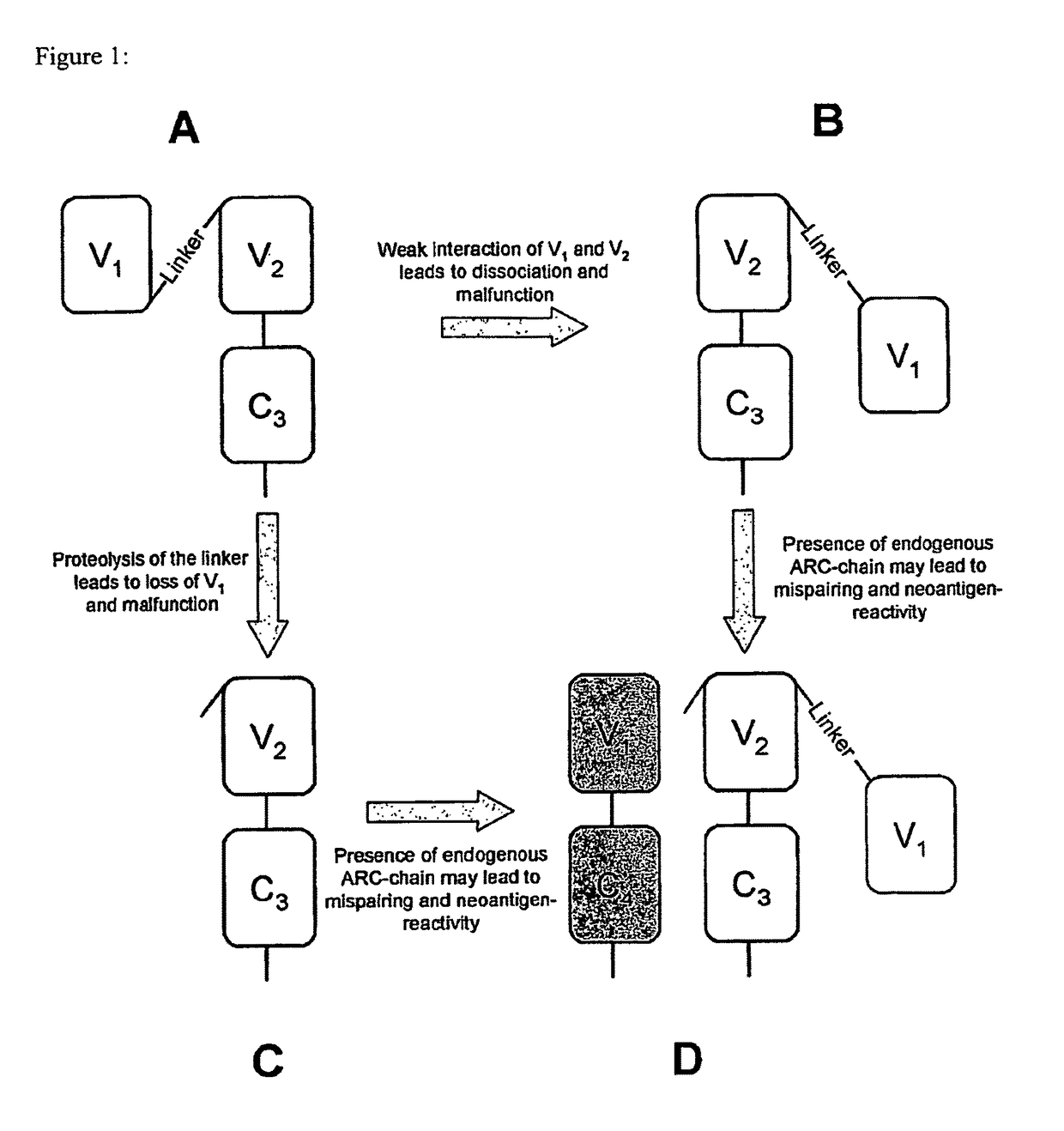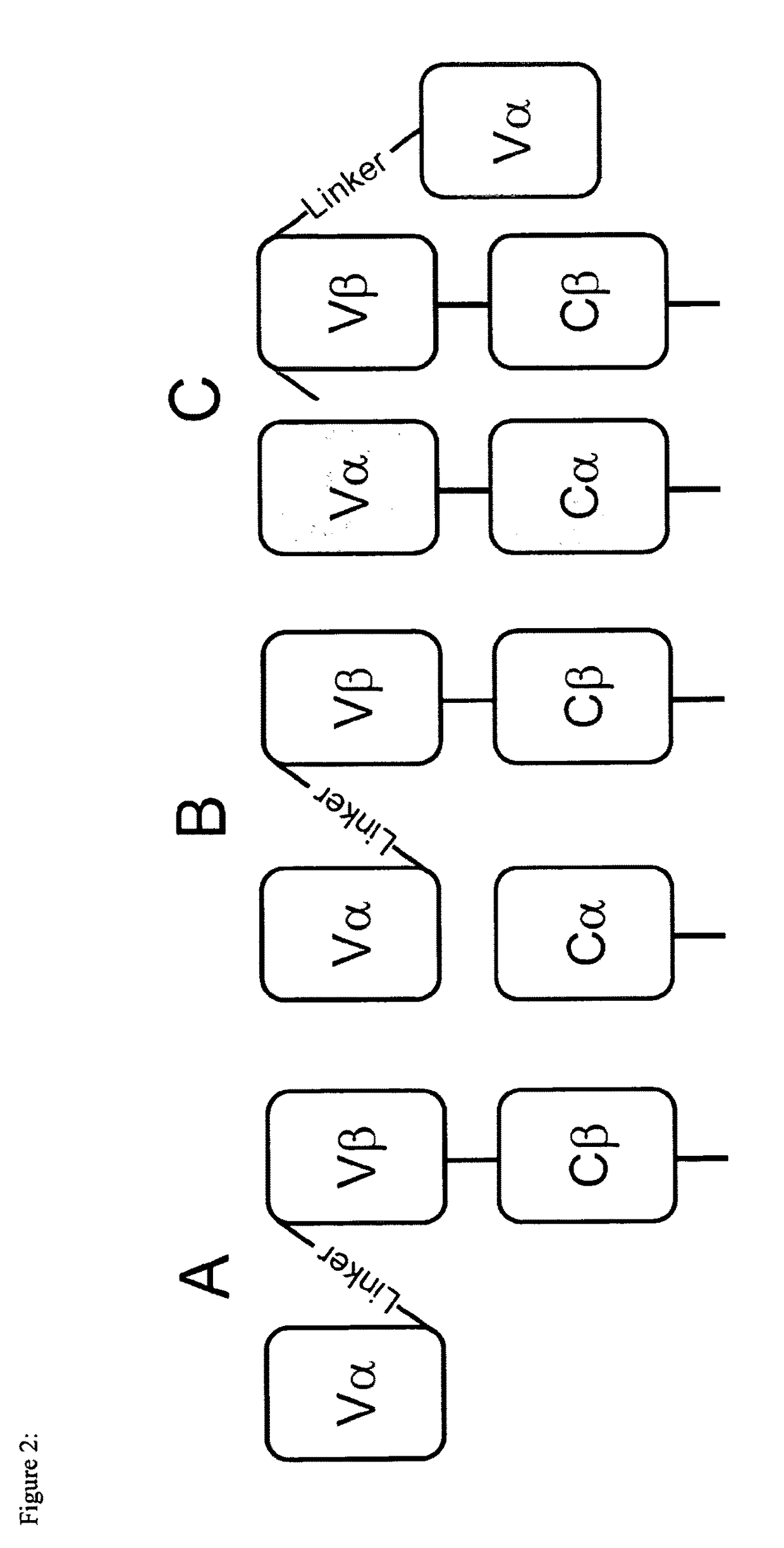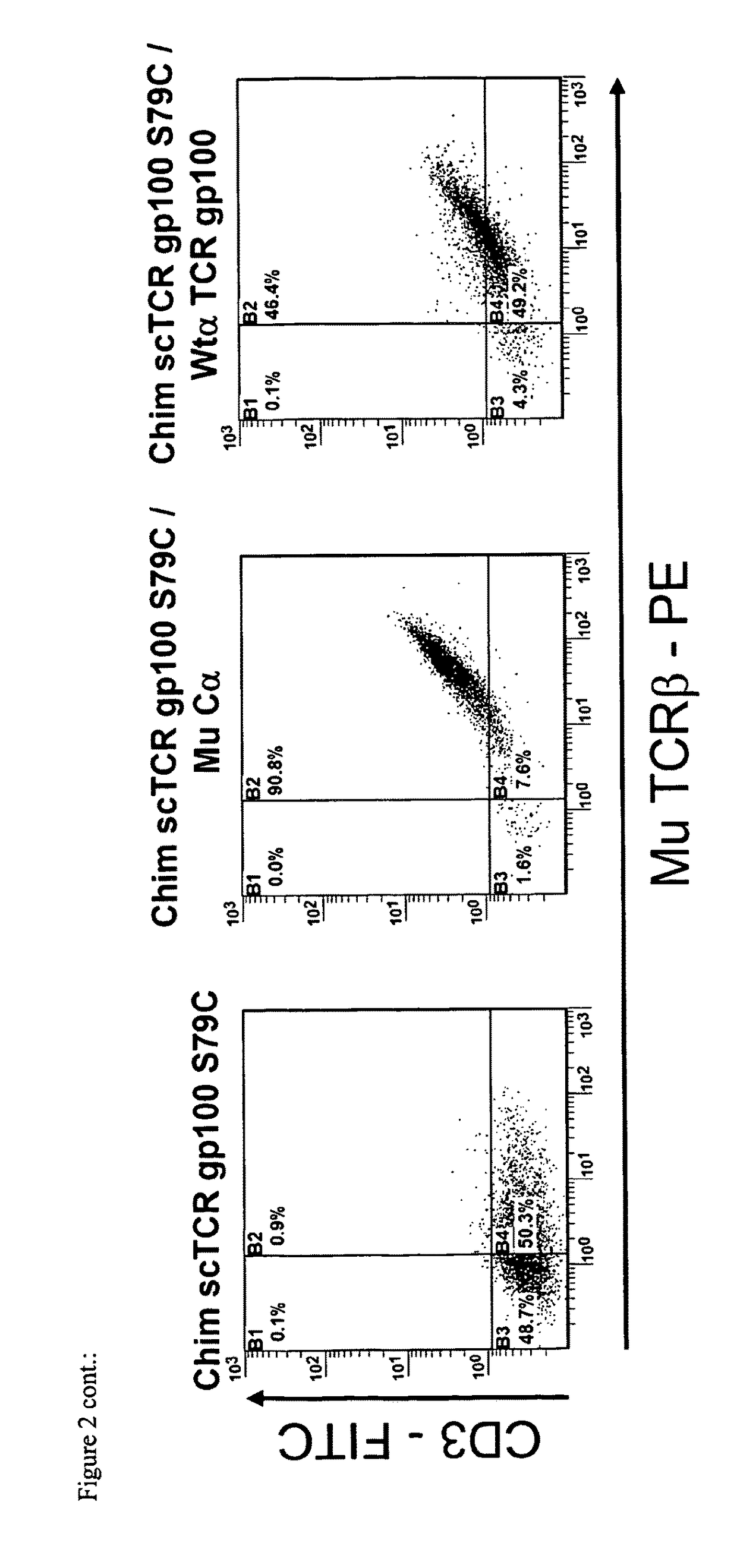Single chain antigen recognizing constructs (scARCs) stabilized by the introduction of novel disulfide bonds
a single-chain antigen and disulfide bond technology, applied in the field of single-chain antigen recognition constructs, can solve the problems of inability to inhibit the pairing of exogenous and endogenous chains, difficult monitoring and tracking in vivo, and over-expression with unexpected consequences, so as to improve the interaction strength of tcr v-domains, the effect of less pron
- Summary
- Abstract
- Description
- Claims
- Application Information
AI Technical Summary
Benefits of technology
Problems solved by technology
Method used
Image
Examples
example 1
Design of Novel Disulfide Bonds
[0091]For the present invention in silico visual inspection and rational design of a crystal murine and human TCR structure was used, taken from RCSB protein data bank (Piscataway, N.J.), the pdb-entries ITCR and 2VLM, respectively. From this, it initially became clear, that murine and human TCR structures are very homologous with very small root mean Square deviations in the low Angstrom (A) range. Therefore, the design of a novel disulfide bond should be easily applied to both TCR-species. This is particular important with respect to the fact, that the scTCR / Cα format (Voss et al., 2010) was only functional for chimerized, i.e. in the Cα / β-domains murinized constructs in the past. Since a TCR structure is composed of four globular immunoglobulin-like folded domains linked by short loops, any designed disulfide bridge between any domains should be also easily transferable from double chain TCRs, for which empirical structures exist, to out proprietary...
example 2
Verification of scARC Stability
[0105]In FACS-analysis it turned out to be that the novel disulfide bonds of category I and II (FIG. 3A,B) slightly decreased expression of the scTCR / Cα (FIG. 4A,B left). Mis-pairing with full-length TCRα gp100 serving as ‘mimicry’ endogenous TCRα chain was almost abolished (FIG. 4A,B right). The disulfide bond of category III (FIG. 4C left) even improved expression of scTCR / Cα slightly, also in tetramer analysis (data not shown). This disulfide bond seems to protect the linker and thus, to stabilize the scTCR / Cα-scaffold. However, tiny amounts of mis-pairing with TCRα gp100 still took place as shown by CD3-expression on cell surface (FIG. 4C right) but in a much more reduced fashion when compared to the referenced scTCR (FIG. 2B). Tetramer staining was almost abolished and comparable to scTCR gp100 when expressed alone (FIG. 2A and data not shown). It is important to note that Mu TCRβ-staining is not a marker for functional surface expression of a TCR...
PUM
| Property | Measurement | Unit |
|---|---|---|
| dissociation energy | aaaaa | aaaaa |
| length | aaaaa | aaaaa |
| length | aaaaa | aaaaa |
Abstract
Description
Claims
Application Information
 Login to View More
Login to View More - R&D
- Intellectual Property
- Life Sciences
- Materials
- Tech Scout
- Unparalleled Data Quality
- Higher Quality Content
- 60% Fewer Hallucinations
Browse by: Latest US Patents, China's latest patents, Technical Efficacy Thesaurus, Application Domain, Technology Topic, Popular Technical Reports.
© 2025 PatSnap. All rights reserved.Legal|Privacy policy|Modern Slavery Act Transparency Statement|Sitemap|About US| Contact US: help@patsnap.com



